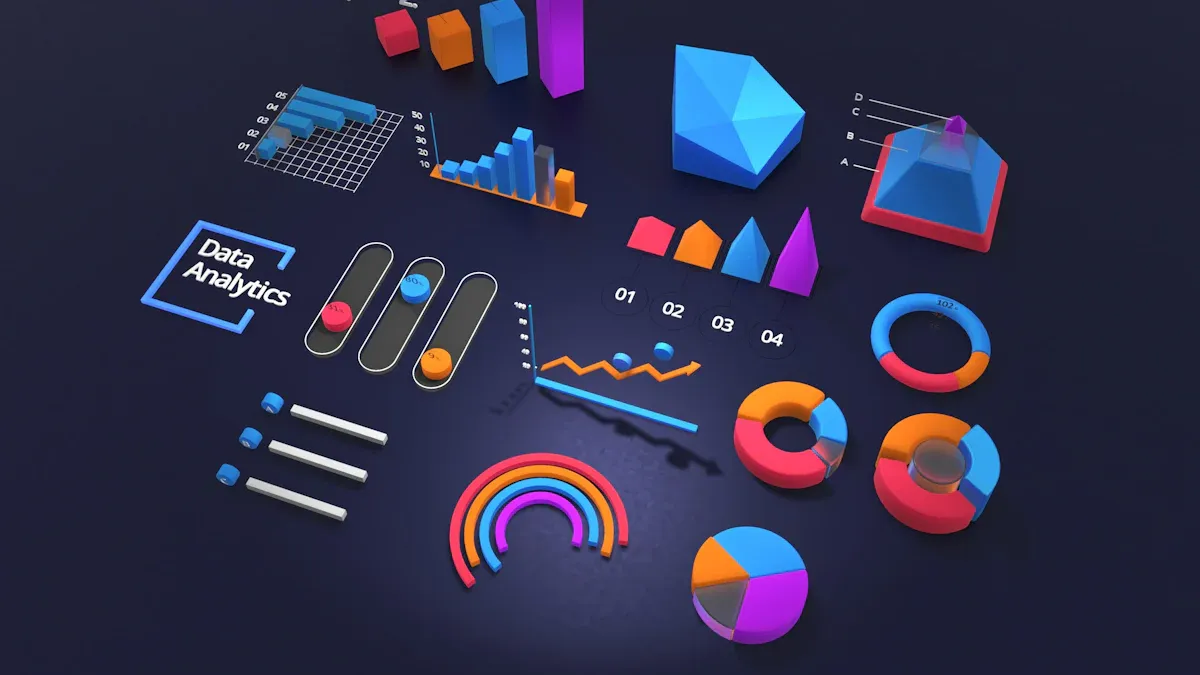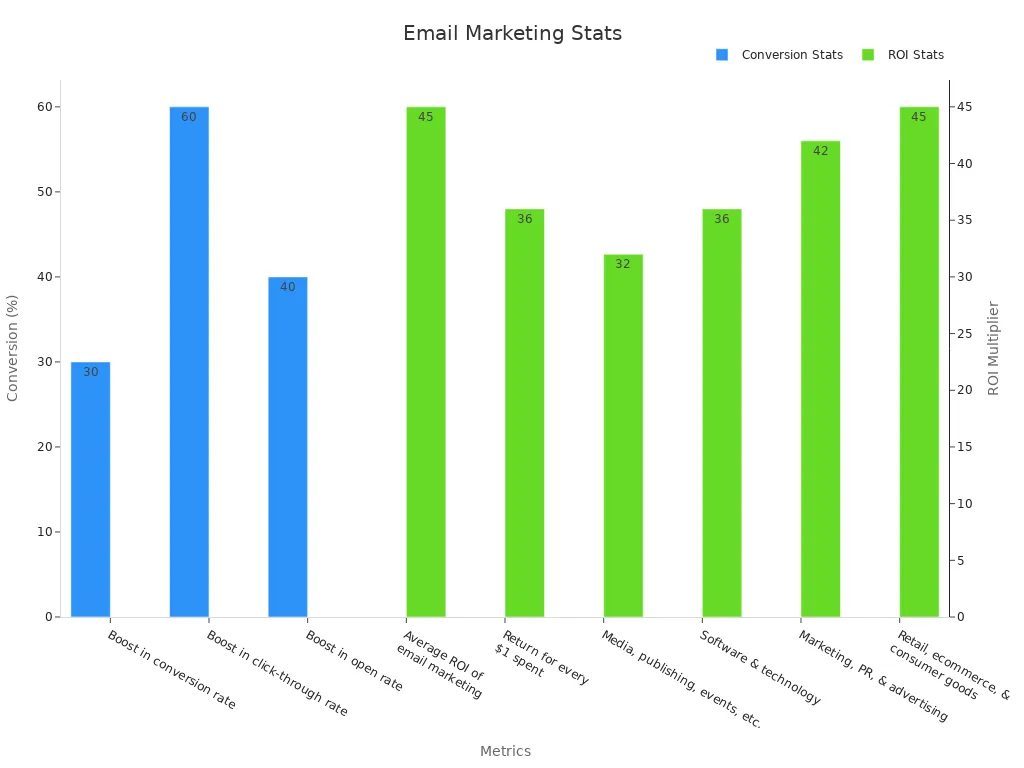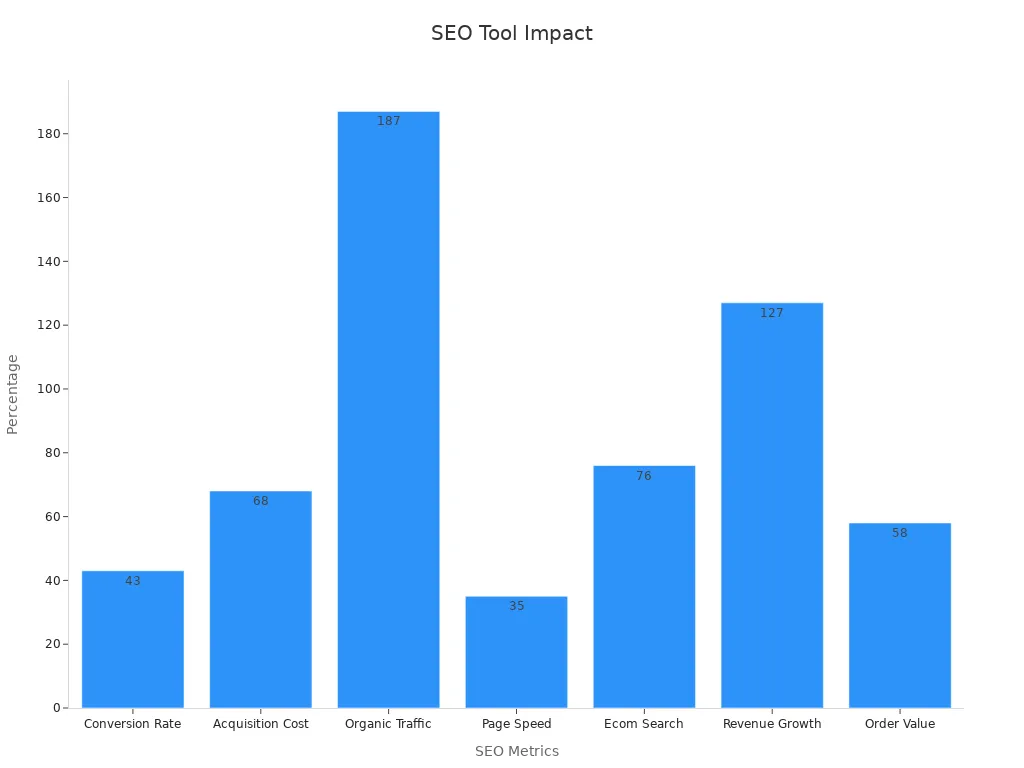Best brand marketing tools

Building a strong brand identity isn’t just about having a fancy logo. It’s about consistency, strategy, and using the right brand marketing tools to make your life easier. Did you know 35% of organizations saw a 10-20% revenue boost from consistent branding? These tools save time, improve brand awareness, and enhance brand reputation effortlessly.
Key Takeaways
Use social media tools like Hootsuite, Buffer, and Sprout Social. These help you organize your branding and connect with your audience better.
Try email tools like Mailchimp and Constant Contact. They help you make great campaigns that more people will open and act on.
Add SEO tools like Ahrefs and SEMrush to your work. These tools help your website get noticed and bring in more visitors.
Social Media Management Brand Marketing Tools
Social media is where your brand comes to life. It’s the space where you connect with your audience, build relationships, and showcase your brand identity. But managing multiple platforms can feel overwhelming. That’s where social media marketing tools step in to save the day. Let’s explore three powerful branding tools that can help you streamline your social media efforts and boost your brand reputation.
Hootsuite
Hootsuite is like the Swiss Army knife of social media marketing. It allows you to manage all your social media accounts from one dashboard. You can schedule posts, monitor engagement, and even track performance metrics. This tool is perfect for maintaining a consistent branding strategy across platforms.
Imagine this: You’re running a campaign to increase brand awareness. With Hootsuite, you can schedule posts for Facebook, Instagram, and Twitter all at once. Plus, its analytics feature helps you see what’s working and what’s not. This way, you can tweak your strategy in real time.
Tip: Use Hootsuite’s content calendar to plan your posts ahead of time. It’s a lifesaver during busy seasons!
Buffer
If simplicity is what you’re after, Buffer has got your back. This tool focuses on making social media scheduling and publishing as easy as pie. It’s especially great for small businesses or individuals who want to maintain a strong brand presence without getting bogged down by complex features.
Buffer’s clean interface lets you schedule posts, analyze performance, and even collaborate with your team. For example, if you’re launching a new product, Buffer can help you plan a series of posts that align with your branding strategy. Its analytics feature also provides insights into how your audience is engaging with your content.
Did you know? Studies show that social media marketing tools like Buffer can significantly enhance brand reach. For instance:
Study | Findings | Impact on Brand Reach |
|---|---|---|
Kim and Ko (2012) | SMMAs significantly affect social identification | Influences purchase decisions and brand loyalty |
Beig and Khan (2018) | SMM gets to targeted audiences | Enhances information impact and community relationships |
Tarsakoo and Charoensukmongkol (2020) | Social media provides easy access to product information | Reduces reliance on traditional media for purchase decisions |
Sprout Social
Sprout Social is like having a personal assistant for your social media. It’s a robust tool that combines scheduling, analytics, and customer relationship management (CRM). This makes it ideal for brands that want to focus on building deeper connections with their audience.
One standout feature of Sprout Social is its social listening tool. It helps you monitor what people are saying about your brand online. This is crucial for maintaining a positive brand reputation. For instance, if a customer tweets about an issue with your product, you can respond quickly and turn a potential problem into an opportunity to show your excellent customer service.
Sprout Social also offers detailed analytics, helping you measure the success of your campaigns. Whether you’re aiming to increase brand awareness or improve engagement, this tool provides the insights you need to refine your approach.
Pro Tip: Use Sprout Social’s CRM features to track interactions with your audience. It’s a great way to personalize your responses and build loyalty.
Social media marketing tools like Hootsuite, Buffer, and Sprout Social aren’t just about saving time. They’re about creating a cohesive brand identity, improving your branding strategy, and connecting with your audience in meaningful ways.
Email Marketing Branding Tools
Email marketing remains one of the most effective ways to connect with your audience. It’s personal, direct, and measurable. With the right branding tools, you can create campaigns that not only look professional but also drive results. Let’s dive into three powerful email marketing tools that can elevate your email marketing strategies.
Mailchimp
Mailchimp is a favorite among marketers for its user-friendly interface and robust features. It’s perfect for creating visually appealing emails that align with your brand identity. Whether you’re a small business or a large enterprise, Mailchimp offers tools to design, automate, and analyze your campaigns.
Imagine you’re launching a new product. With Mailchimp, you can create a series of automated emails to build excitement, share product details, and even offer exclusive discounts. Its analytics dashboard helps you track open rates, click-through rates, and conversions, giving you insights to refine your strategy.
Tip: Use Mailchimp’s A/B testing feature to see which subject lines or designs resonate best with your audience.
Constant Contact
Constant Contact is another excellent tool for email marketing. It’s known for its ease of use and wide range of templates. This tool is ideal for businesses looking to maintain consistent branding across their email campaigns.
With Constant Contact, you can schedule emails, segment your audience, and even integrate with social media platforms. For example, if you’re hosting an event, you can use this tool to send invitations, reminders, and follow-ups, all while keeping your branding consistent.
Did you know? Email marketing tools like Constant Contact can boost open rates by up to 40%, helping you reach more people effectively.
HubSpot Email Marketing
HubSpot Email Marketing combines the power of email with advanced marketing automation tools. It’s perfect for businesses that want to take their email campaigns to the next level.
One standout feature is its personalization capabilities. You can tailor emails based on user behavior, ensuring your messages feel relevant and timely. For instance, if a customer abandons their cart, HubSpot can automatically send a follow-up email to encourage them to complete their purchase.
HubSpot also integrates seamlessly with its CRM, making it a powerful lead generation tool. This integration allows you to track customer interactions and nurture leads more effectively.

Pro Tip: Use HubSpot’s analytics to measure the ROI of your campaigns. On average, email marketing delivers $36 for every $1 spent, making it one of the most cost-effective marketing tools.
Why Email Marketing Tools Matter
Email marketing tools are more than just platforms for sending emails. They’re branding tools that help you maintain a consistent brand identity, improve brand awareness, and drive results. Here’s a quick look at the impact of email marketing:
Metric | Value |
|---|---|
Boost in conversion rate | 30% |
Boost in click-through rate | 60% |
Boost in open rate | 40% |
$45 per $1 | |
Return for every $1 spent | $36 |
Media, publishing, events, etc. | 32:1 |
Software & technology | 36:1 |
Marketing, PR, & advertising | 42:1 |
Retail, ecommerce, & consumer goods | 45:1 |
These tools simplify your workflow, enhance your email marketing strategies, and deliver impressive ROI. Whether you’re a small business or a large organization, investing in email marketing tools is a smart move.
SEO and Analytics Marketing Tools
If you want your brand to thrive online, SEO and analytics marketing tools are your best friends. These tools help you understand how your audience finds you, what they’re searching for, and how you can improve your visibility. Let’s dive into three powerful SEO tools that can elevate your branding strategy and drive organic traffic.
Ahrefs
Ahrefs is a powerhouse when it comes to SEO tools. It’s like having a treasure map for your website’s performance. With Ahrefs, you can analyze your competitors, find high-performing keywords, and track your backlinks. This tool gives you the insights you need to improve your search rankings and boost brand awareness.
Imagine you’re launching a new product. Ahrefs can help you identify the keywords your audience is searching for. You can then create content around those keywords to attract more visitors. Plus, its backlink analysis feature shows you which sites are linking to your competitors, giving you opportunities to build your own links.
Pro Tip: Use Ahrefs’ Content Explorer to find trending topics in your niche. It’s a great way to stay ahead of the curve and keep your content fresh.
SEMrush
SEMrush is like a Swiss Army knife for digital marketing tools. It offers everything from keyword research to site audits, making it a go-to for marketers who want to optimize their websites. One standout feature is its ability to track your competitors’ strategies. You can see what’s working for them and adapt it to your own branding tools.
For example, SEMrush’s Position Tracking tool lets you monitor your keyword rankings in real time. If you notice a drop, you can quickly adjust your strategy to regain your position. Its site audit feature also helps you identify technical issues that could be hurting your SEO performance.
Here’s a quick look at how SEO tools like SEMrush impact performance:
Statistic | Description |
|---|---|
Retailers using comprehensive SEO tools see a 43% increase in conversion rates. | |
68% Reduction in Customer Acquisition Costs | Optimized ecommerce sites have 68% lower customer acquisition costs. |
187% Increase in Organic Traffic | AI-powered SEO tools lead to an average 187% increase in organic traffic. |
35% Improvement in Page Load Speed | Technical SEO tools improve page load speeds by 35%, reducing bounce rates. |
127% Higher Revenue Growth | Companies with advanced SEO programs experience 127% higher revenue growth. |
Did you know? 76% of ecommerce purchases begin with a search engine. That’s why investing in SEO tools like SEMrush is crucial for your brand’s success.
Google Analytics
Google Analytics is the ultimate tool for understanding your audience. It provides detailed insights into who’s visiting your site, how they’re finding you, and what they’re doing once they’re there. This data is invaluable for refining your branding tools and improving your overall strategy.
One of the best features of Google Analytics is its ability to track user behavior. For instance, you can see which pages are performing well and which ones need improvement. You can also track conversions, helping you understand what’s driving sales or sign-ups.
Here’s a visual representation of how SEO tools impact key metrics:

Tip: Use Google Analytics’ Audience Overview report to segment your visitors by demographics, location, and interests. This helps you tailor your content to meet their needs.
Why SEO and Analytics Marketing Tools Matter
SEO and analytics tools aren’t just about improving your search rankings. They’re essential branding tools that help you understand your audience, optimize your content, and drive organic traffic. Whether you’re using Ahrefs, SEMrush, or Google Analytics, these tools give you the insights you need to make data-driven decisions and grow your brand.
Branding and Design Tools for Marketing

Creating eye-catching visuals is essential for building a memorable brand. The right branding tools can help you design professional, consistent, and engaging content that aligns with your brand identity. Let’s explore three powerful marketing tools that can elevate your design game.
Canva
Canva is a game-changer for anyone who wants to create stunning visuals without being a design expert. Its drag-and-drop interface makes it easy to design everything from social media posts to presentations. You’ll find thousands of templates that you can customize to match your brand’s style.
Imagine you’re launching a new campaign. Canva lets you create on-brand graphics in minutes. You can even save your brand colors, fonts, and logos to ensure consistency across all your designs. Plus, its collaboration feature allows your team to work on projects together, making it perfect for group efforts.
Tip: Use Canva’s data visualization tools to turn complex information into simple, intuitive visuals. It’s a great way to communicate your message effectively.
Adobe Illustrator
Adobe Illustrator is the go-to tool for professional designers. It offers advanced features for creating vector graphics, which means your designs will look sharp no matter the size. If you’re serious about branding, this tool gives you the flexibility to create custom logos, illustrations, and typography.
For example, if you’re designing a logo, Illustrator’s precision tools let you tweak every detail to perfection. You can also use its vast library of brushes and effects to add unique touches to your designs. While it has a steeper learning curve, the results are worth it for those who want complete creative control.
Pro Tip: Maintain design consistency by creating reusable templates in Illustrator. This ensures your branding stays professional and aligned across all platforms.
Figma
Figma is a favorite among teams for its real-time collaboration features. It’s a cloud-based design tool that allows multiple users to work on the same project simultaneously. Whether you’re designing a website or a mobile app, Figma makes the process seamless and efficient.
One standout feature is its ability to create interactive prototypes. You can design user interfaces and test them before launching, ensuring a smooth user experience. Figma also integrates with other marketing tools, making it a versatile choice for branding tools in 2025.
Here’s why branding and design tools like Canva, Adobe Illustrator, and Figma matter:
Insight | Description |
|---|---|
Data Transformation | Data visualization simplifies complex data into intuitive visuals. |
Design Consistency | Consistent design elements ensure professionalism and brand alignment. |
Future Trends | AI and immersive technologies foster deeper engagement and understanding. |
These tools empower you to create visuals that not only look great but also communicate your brand’s message effectively. Whether you’re a beginner or a pro, investing in the right branding tools can make all the difference.
Content Marketing and Scheduling Tools
Content marketing is all about creating and sharing valuable content to attract and engage your audience. But let’s face it—managing content and keeping everything organized can feel like juggling too many balls at once. That’s where scheduling tools come in. They help you plan, organize, and execute your content marketing strategies without breaking a sweat. Let’s explore three fantastic marketing tools that can make your life easier.
CoSchedule
CoSchedule is like your personal assistant for content marketing. It’s a powerful tool that combines a content calendar with scheduling features to keep your campaigns on track. You can plan blog posts, social media updates, and email campaigns all in one place.
Imagine you’re launching a new product. CoSchedule lets you map out your entire campaign, from teaser posts to follow-up emails. Its drag-and-drop calendar makes it easy to adjust your schedule if something changes. Plus, its analytics feature helps you measure the success of your campaigns, so you know what’s working and what needs tweaking.
Tip: Use CoSchedule’s "Best Time Scheduling" feature to post content when your audience is most active. It’s a game-changer for boosting engagement!
Trello
Trello is perfect for visual thinkers. This tool uses boards, lists, and cards to help you organize your content marketing projects. Whether you’re brainstorming ideas or tracking progress, Trello makes collaboration simple and fun.
Let’s say you’re planning a series of blog posts. You can create a board for your project, add cards for each post, and move them through stages like "Drafting," "Editing," and "Published." Trello’s flexibility lets you customize workflows to fit your team’s needs.
Did you know? Teams using Trello report a 30% increase in productivity because of its intuitive design and easy collaboration features.
Airtable
Airtable is like a spreadsheet on steroids. It’s a versatile tool that combines the simplicity of spreadsheets with the power of databases. You can use it to manage content calendars, track campaign performance, and even store brand assets.
For example, if you’re running a multi-channel campaign, Airtable lets you organize everything in one place. You can track website conversions, video engagement, and email metrics—all while keeping your team in sync.
Here’s a quick look at how content marketing tools like Airtable improve campaign efficiency:
Metric Type | Description |
|---|---|
Website Conversions | Measures the number of visitors completing desired actions, indicating content influence on purchases. |
Video Engagement | Evaluates views, watch time, and engagement metrics to assess content resonance with viewers. |
Traffic Metrics | Analyzes traffic generated by content marketing, indicating effectiveness in attracting visitors. |
Email Marketing Metrics | Assesses delivery rates, open rates, and click-through rates to gauge email campaign effectiveness. |
Analytics Tools | Utilizes tools like Google Analytics for tracking performance and user behavior. |
Pro Tip: Use Airtable’s templates to set up your content calendar quickly. It’s a lifesaver when you’re short on time!
Content marketing and scheduling tools like CoSchedule, Trello, and Airtable aren’t just about staying organized. They help you execute your strategies efficiently, improve campaign performance, and make your content marketing efforts shine.
Specialized Brand Marketing Tools
Specialized brand marketing tools are game-changers for businesses that want to maintain a strong and consistent brand presence. These tools go beyond the basics, offering advanced features to help you monitor your brand, manage assets, and build a stellar reputation. Let’s dive into three standout options.
Frontify
Frontify is your go-to platform for managing brand assets and ensuring consistency. It centralizes everything—logos, templates, guidelines—so your team can access them anytime. This tool is perfect for keeping your branding cohesive across all channels.
Imagine you’re launching a global campaign. Frontify ensures everyone sticks to the same playbook, no matter where they’re located. Its interactive brand guidelines make it easy to update and share changes in real time. Plus, its collaboration features streamline creative workflows, saving you time and headaches.
Tip: Use Frontify’s version control to track updates and maintain a clear history of your brand assets.
Brandwatch
Brandwatch is a powerhouse for understanding how people perceive your brand online. It uses AI to analyze social media conversations, giving you insights into trends, sentiment, and customer behavior. This makes it one of the most effective consumer research tools available.
For example, if a new product launch sparks chatter on Twitter, Brandwatch helps you gauge the sentiment. Are people excited? Confused? Complaining? You’ll know instantly and can adjust your strategy accordingly.
Social media has revolutionized brand interactions, and tools like Brandwatch help you stay ahead.
Text mining and unstructured data analysis optimize brand management by uncovering hidden insights.
Pro Tip: Leverage Brandwatch to identify emerging trends and create content that resonates with your audience.
Mention
Mention is all about real-time brand monitoring. It tracks mentions of your brand across social media, blogs, and news sites, so you’re always in the loop. This tool is ideal for spotting potential PR issues before they escalate.
Let’s say a customer posts a negative review. Mention alerts you immediately, giving you the chance to respond and turn things around. It’s also great for tracking competitors and identifying opportunities to stand out.
Ethical marketing practices, supported by tools like Mention, build trust and long-term customer relationships.
Understanding consumer behavior on social media helps you craft meaningful, impactful content.
Note: Use Mention to monitor your competitors and discover gaps in their strategies that you can capitalize on.
Specialized marketing tools like Frontify, Brandwatch, and Mention empower you to take control of your brand. They help you stay consistent, monitor your reputation, and connect with your audience in meaningful ways.
Brand marketing tools play a vital role in shaping your brand identity and simplifying your operations. They help you stay consistent, save time, and improve your brand’s performance. Choosing the right tools depends on your business size, goals, and budget. Start small, test features, and scale as needed.
Here’s how these tools impact long-term brand equity:
Metric | Description |
|---|---|
Brand Awareness | Measures how well consumers recognize or recall a brand. |
Brand Reputation | Reflects public perception and trust in the brand, impacting customer loyalty. |
Brand Equity | Represents the value added to products/services by the brand, influencing sales and growth. |
Brand Loyalty | Indicates the likelihood of customers to continue purchasing from the brand. |
Share of Voice (SOV) | Compares brand visibility against competitors in the market. |
Customer Lifetime Value (CLV) | Estimates the total revenue a business can expect from a customer over the duration of their relationship. |
Experimenting with different marketing tools lets you discover what works best for your brand. Dive in, explore, and watch your brand identity thrive!
FAQ
What are brand marketing tools, and why do you need them?
Brand marketing tools help you manage your brand’s identity, assets, and performance. They save time, ensure consistency, and improve your brand’s visibility and reputation.
How do I choose the right brand marketing tool?
Start by identifying your goals and budget. Look for tools that align with your needs, like social media management, design, or analytics features.
Can small businesses benefit from brand marketing tools?
Absolutely! These tools simplify branding tasks, improve efficiency, and help small businesses compete by creating a professional and consistent brand presence.
See Also
Top 10 Tools To Elevate Your Branding And Marketing
Unlock Your Brand's Full Potential Using These Resources


